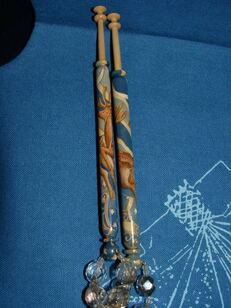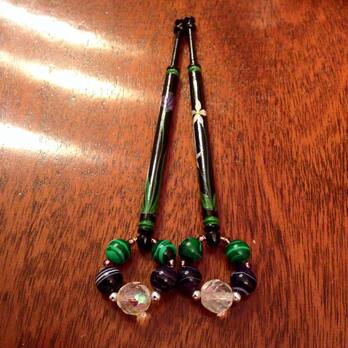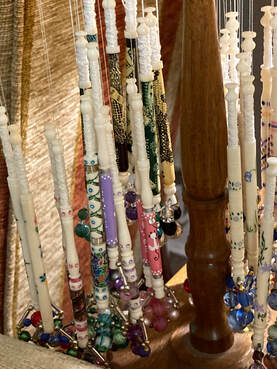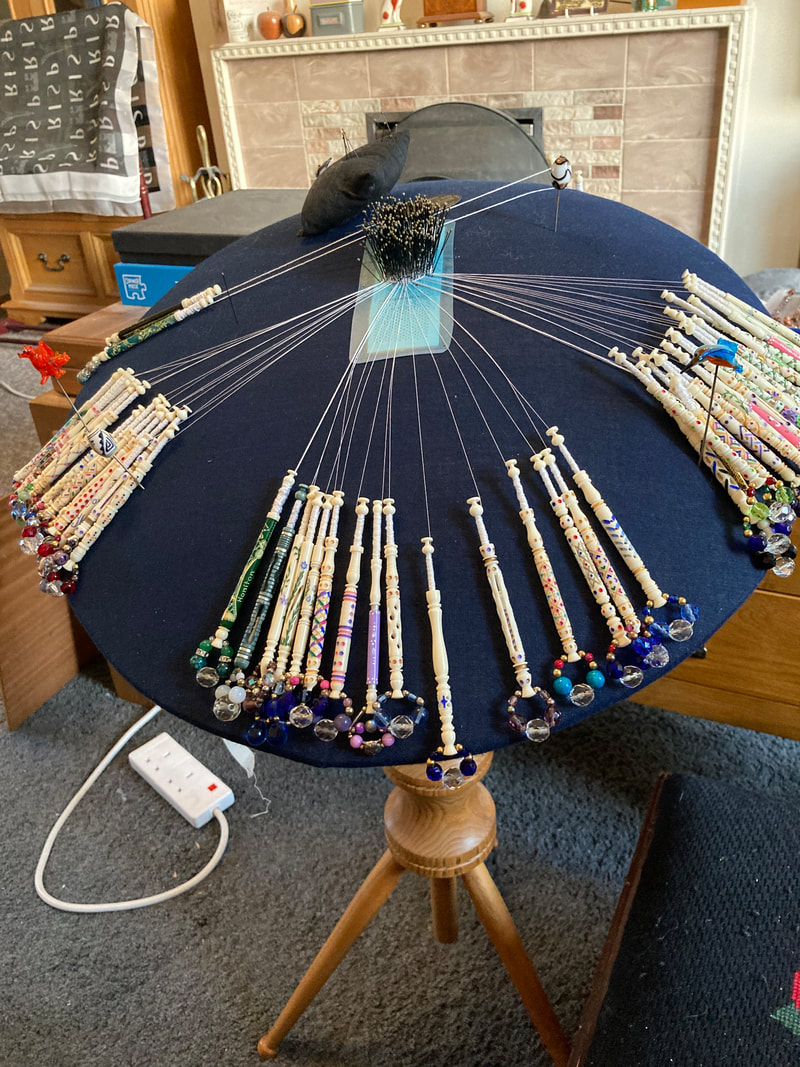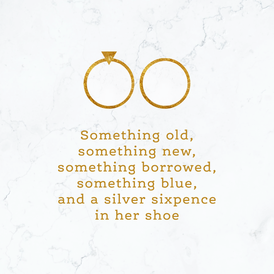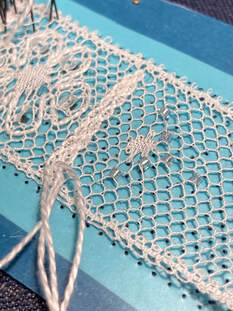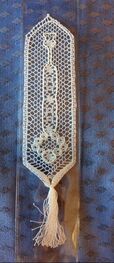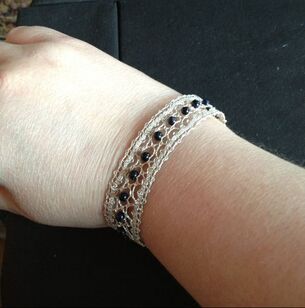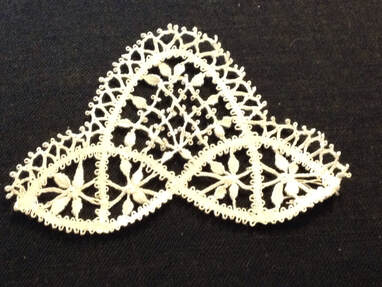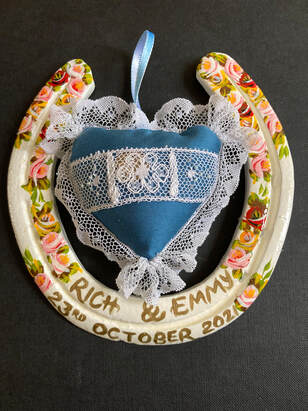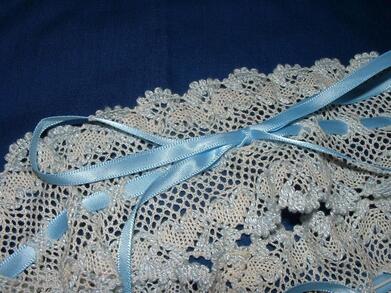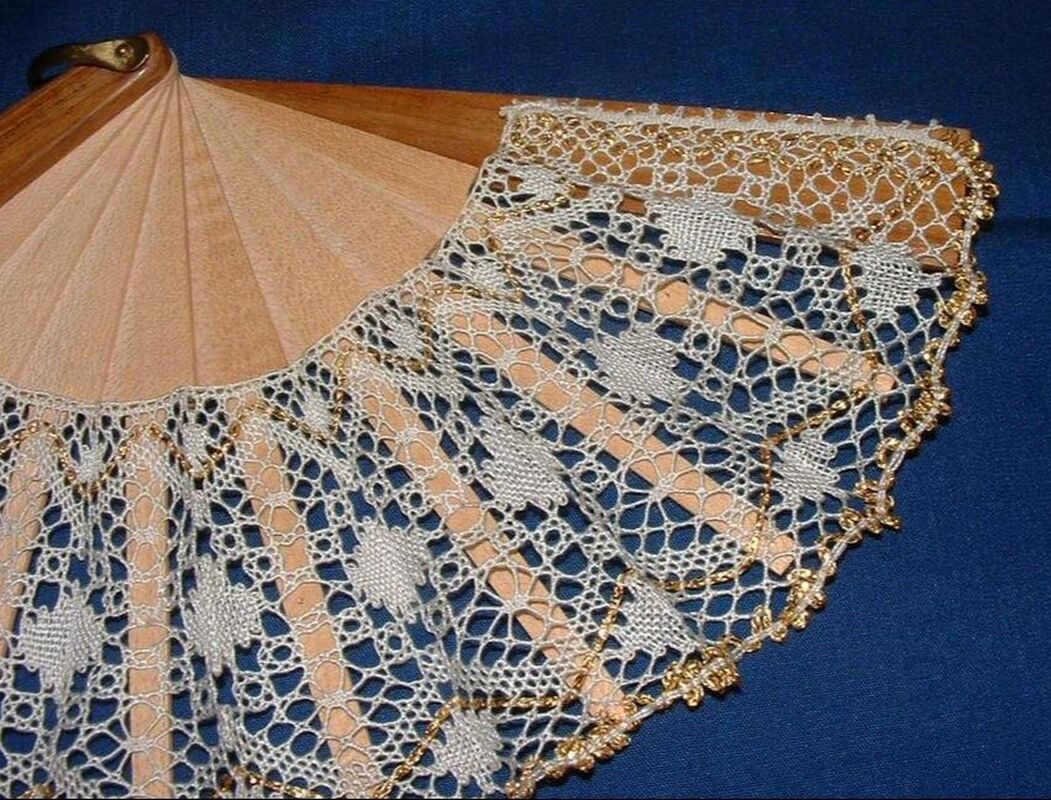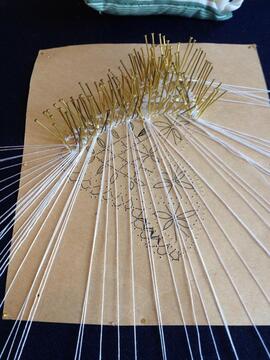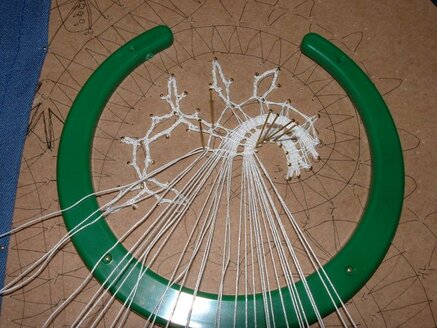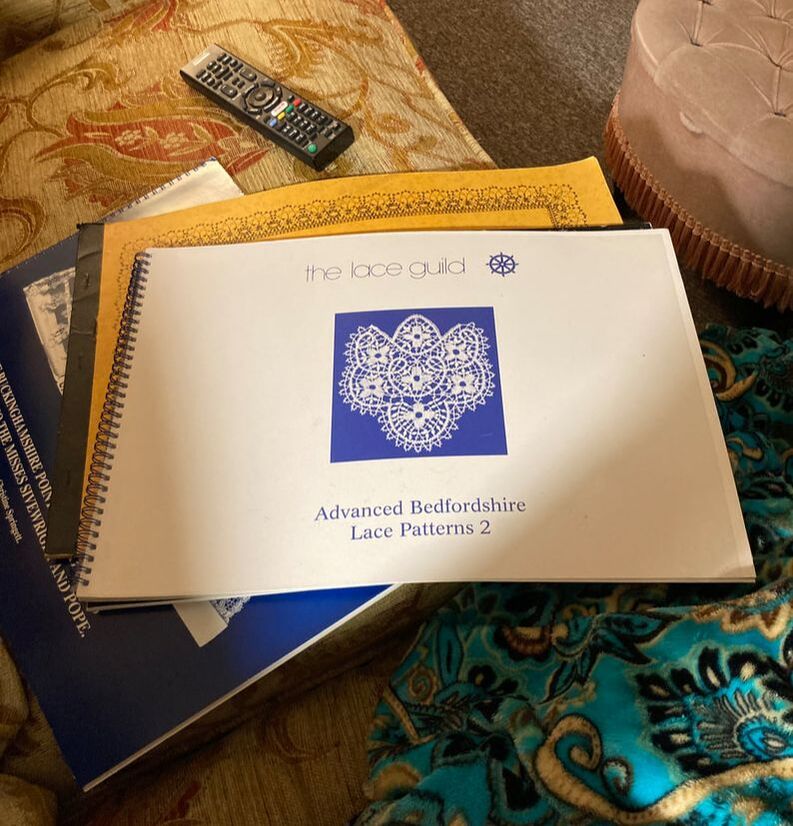|
Why do we prick out patterns? Pre-pricking a pattern ensures that your lines are clean and straight. It is easier to get accurate holes for your pins, when you pre-prick. So, if your lines aren't as smooth as you would like, think about pre-pricking. 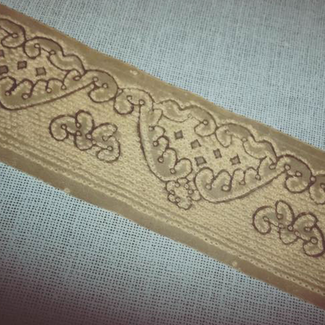 Traditional parchment pricking dating from the late 18th Century / early 19th Traditional parchment pricking dating from the late 18th Century / early 19th Traditionally lace patterns or prickings were made onto parchment and I have a number of these dating from the end of the 1800s / start of the 1900s. During the lace revival starting in the 1970s, people would take rubbings of older prickings then true them up - because you put pins in the holes, the holes can get enlarged or because they were copies of copies then the lines were not straight. Truing meant that the lines were straightened and the pattern 'restored'. Before photocopies and home printers were the thing, most books of lacemaking suggested that you traced the pattern from the book then made the pricking. Glazed card was (and still is) sold as pricking card. The idea is that this is heavy enough to hold the pin hole and not deform with usage. 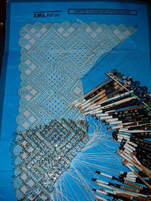 Photocopy with blue film over it Photocopy with blue film over it As tech has advanced, we now can use self adhesive film to cover a photocopy or laminate. For me, a one off pattern that I'll not make again, I may well cover with film. Just as for extremely complicated patterns that are hard to draw the lines in after pricking, then I'll photocopy and cover with film. However, my preferred way of creating a pricking is to take a photocopy and prick through the pattern onto the card, then draw in the lines with a fine line permanent marker. I have patterns that I made when I started, back in the 1980s, that I still use because they are robust. I often use foolscap manilla folders for my pricking card as these are easy to come by and fold out to a large area. The other advantage of pricking through the pattern, directly onto the card is that you can make multiple copies of a pattern, at the same time. Layer up the card stock, pin the pattern onto the top and prick through. Then you draw the lines on to each pricking. This is useful when making a pattern for yardage (or a repeating pattern) such as a garter, or if you are creating multiple patterns for teaching or 'have a go' pillows. 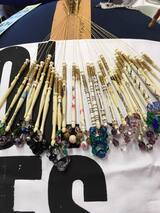 A Spanish pricking that was supplied on orange card A Spanish pricking that was supplied on orange card The use of coloured film is supposed to help ease the eyes however, it's worth thinking about printing onto colour card or using coloured film as different coloured threads can work better or worse depending on the backing colour. Black thread on blue or green can disappear, which is why Spanish lacemakers often use an orange card. You can print directly, these days, onto card. If your printer will take the heavier pricking card, this can be a godsend. Louise West has developed a laser pricker which she uses after first laser printing the lines of the pattern onto card. 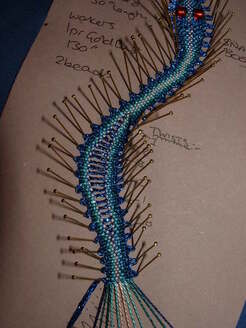 Christine Springett's snake pattern, traditionally pricked with the details of the pattern marked on with permanent fineliner Christine Springett's snake pattern, traditionally pricked with the details of the pattern marked on with permanent fineliner However, before you start printing every pattern in your collection out on card, check that your printer ink is waterproof by rubbing a damp finger over it. If the ink comes off, then it is likely that it will leech onto your work and discolour it. This is why traditionally, mapping ink or permanent markers were used to add in the lines. Going back to a more traditional way, taking a photocopy of the pattern, rubbing beeswax over it to ease the pricking, then pricking through onto your card and adding in the lines with a fine liner is still one of the better ways to learn a pattern whilst being more ecologically minded. Then you can take the photocopy and compost it.
0 Comments
And just like that, your pillow becomes a harlequin dressed in magical bobbins, creating the most beautiful lace.
Back in May 1999, Professor Ralph E Griswold began a project to create a home for scanned documents relating to weaving, including lacemaking. This came about due to his retirement. He started to research the mathematical aspects of weaving and through this the on-line database was launched. Professor Griswold was part of the computing team at the University of Arizona. The on-line Digital Archive was housed on the UAZ servers. The first document added was Cyrus Uhler's Draught and Cording, made from scans done at Lebanon Valley College Library. The first document scanned locally was de Lantsheere's Trésor de L'Art Dentellier from a dilapidated original purchased at a sale at the University of Arizona Library. The key requirement was for the material to be either out of copyright or for the author to have given permission for the work to be added. As of today, there are over 9k pdfs available, including 4.7k articles and 9.1k pdf documents, of which over 470 are books that you can download. The lace world came to know of this project and help with it through the work of Tess Palmer on the Arachne mail lists. Tess began her partnership with the Professor as a willing partner to scan lace documents and a great partnership began. She would keep us informed on how the work was going, seek out contributors and put translators in touch with the Professor. Over the next few years, we became used to seeing emails about Tess & the Professor in our feeds telling us about new uploads and searches for out of copyright material to be added. As lacemaking became a major focus in the archive, it was promoted to it's own section. In order to make choosing a document to download easier, low res sample pages were added to many of the documents so you could 'try before you buy'. These days, that seems a strange thing to do but when the archive was created, many were still on dial up so downloading a pdf could take 15 - 30 minutes and then to find out it didn't contain what you were looking for was a shock. Sadly, Professor Griswold passed away on 4th October, 2006. His pioneering work in computer science reached out far further than Arizona. His impact for lacemakers through the archive has been a wonderful memorial to this great man.
So, what do you need to think about?
So, what are your options?
Where next? Why not try out the book blog for some inspiration. I've even added in a wedding category. Just click on the button below.
What should I get when I buy a pattern or why you should not expect instructions with every pattern18/8/2021
Think of it as the difference between trying to read a newspaper in another language and having to use either a dictionary or google translate compared to being fluent in that language. One of the key things that, as a teacher, I have experienced, is that it gives false confidence. I have had people come to me who have made an intermediate piece that came with instructions and now want to try a similar piece that has none and it is a real shock that they have no understanding on how to make the lace. I will break down the techniques in the pattern they want to make and together we will choose 3 or 4 pieces that will them them the knowledge and confidence to attempt the piece they want to make. I will never tell a student that they can't make a piece, I will always show them how to gain the skills to make it.
So why are these patterns without instructions 'so expensive'?
That is an easy answer. You are relating cost to the number of pages that you get. Whereas, for most designers, the price reflects the time and knowledge it took to create the design. So, what should I get when I buy a pattern? Simple answer - the pattern. Anything else is a bonus. |
From time to time I post on different groups and wanted to collect some of the advice that I give in one places.
Categories
All
Archives
November 2022
|

